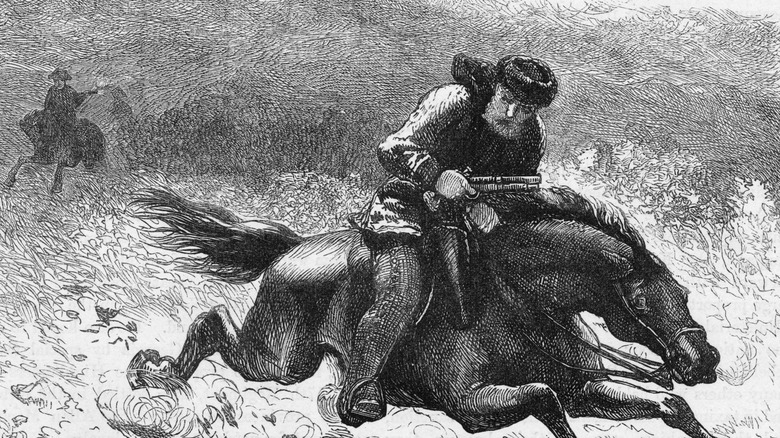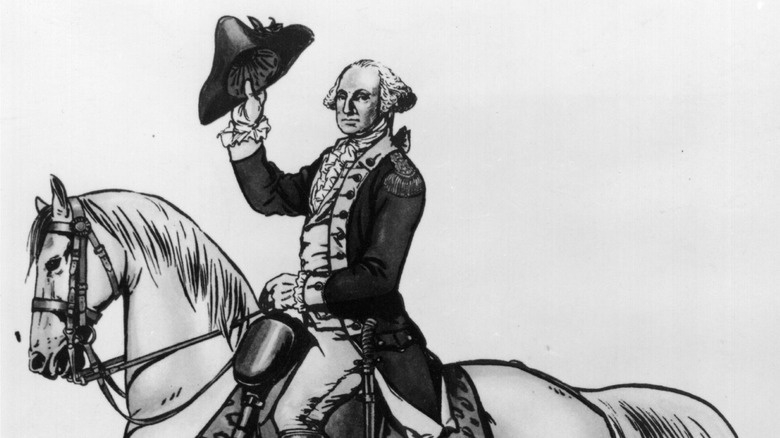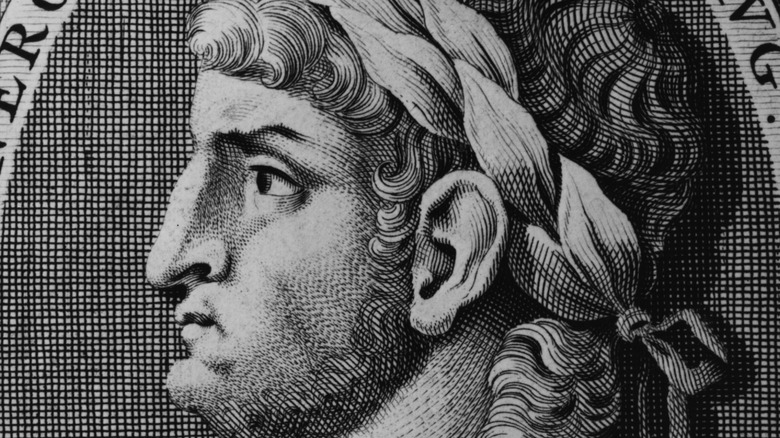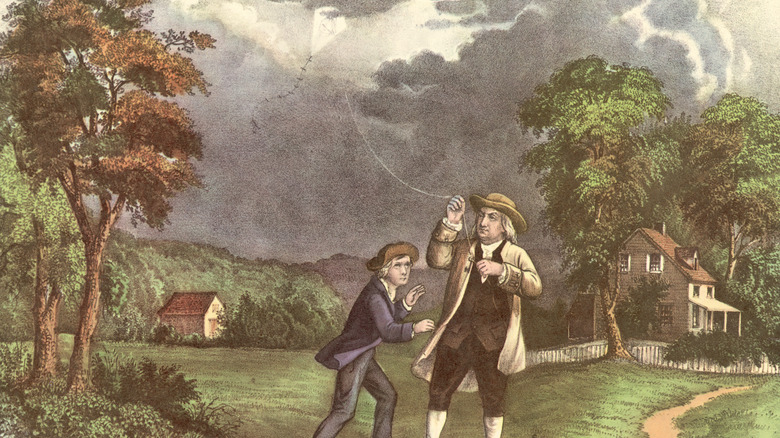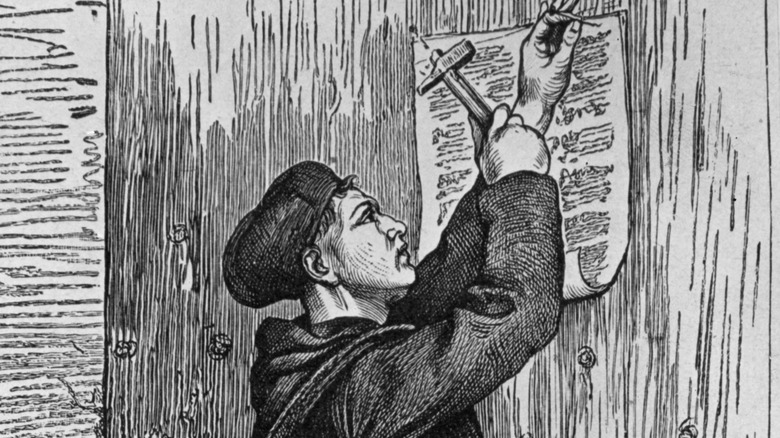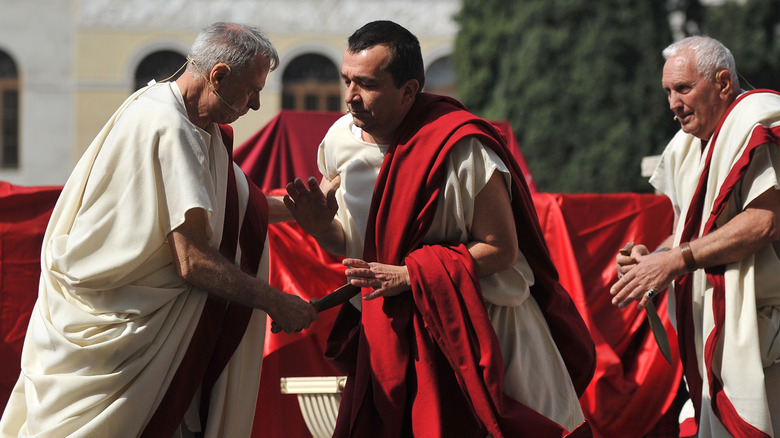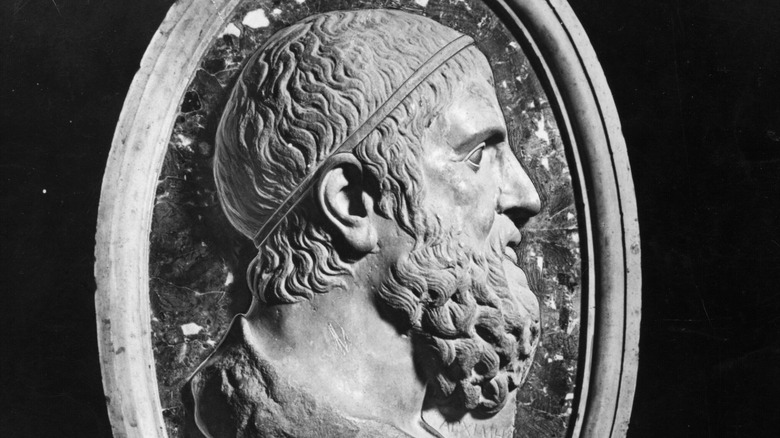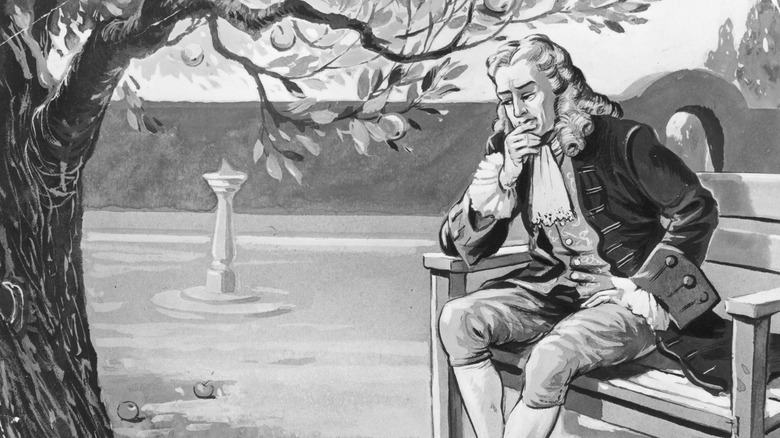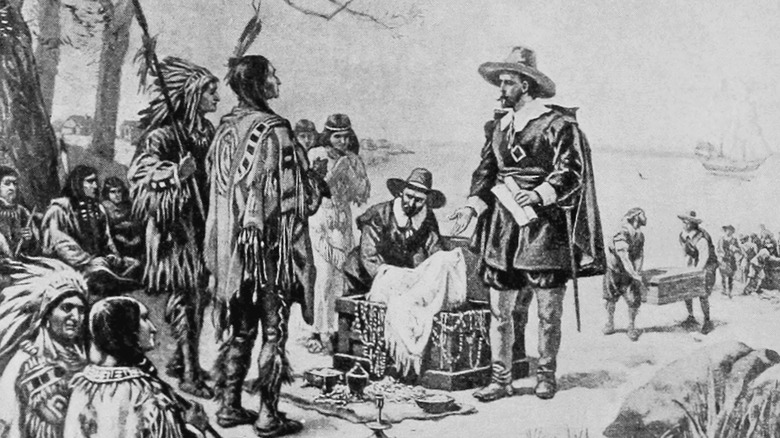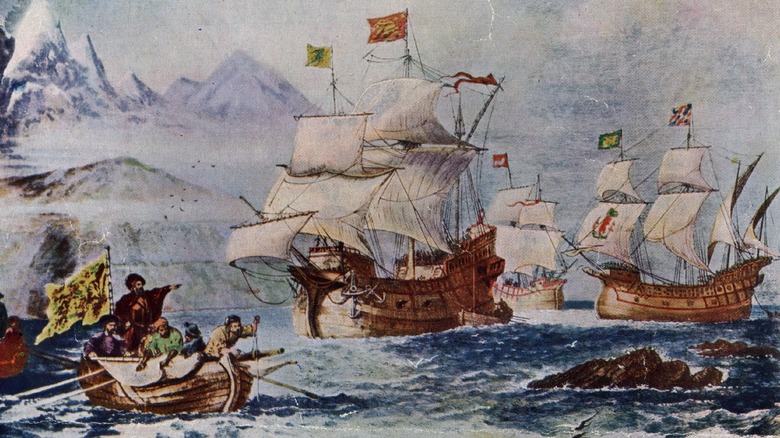Famous Events That Never Actually Happened
The ancient Greek writer Herodotus had two nicknames, "the father of history" and "the father of lies," and the people who called him by these names used them to mean the same thing. History as we receive it is often skewed by various biases and propagandistic impulses; it is, as the saying goes, written by the winners.
As it turns out, a lot of things you think you know about history are just flat-out wrong. Not even just that some elements have been exaggerated or downplayed; they just completely didn't happen at all. Some of the foundational stories of American — and even Western — culture are complete fabrications meant to pass on some greater truth, or in some cases to achieve some more sinister purpose.
This list takes a look at events from across history that embody the message from Tim O'Brien's novel The Things They Carried, that "a thing may happen and be a total lie; another thing may not happen and be truer than the truth."
Paul Revere's midnight ride
"Listen, my children, and you shall hear / Of the made-up ride of Paul Revere!" The legendary image of Paul Revere as a lone rider blasting through the Massachusetts countryside warning American colonials that the British were coming has its origins in an 1860 poem by Henry Wadsworth Longfellow, which he wrote primarily to warn America that it was in danger of breaking apart. See? Like Paul Revere gave out a warning, Longfellow was also issuing a warning. Parallelism.
Anyway, as Biography.com lays out, Longfellow greatly rearranged and simplified much of the real historical narrative of the night of April 18, 1775. For one thing, Paul Revere didn't receive the famous "one if by land, two if by sea" lantern signals — he sent them. He wasn't a solo rider; he was just one part of a larger warning system including Dr. Samuel Prescott, who actually warned the militia at Lexington and Concord after Revere was arrested outside Lexington. He didn't shout "The British are coming!" either. The one quote we have from him was his reply to someone telling him he was making too much noise: "Noise! You'll have noise enough before long! The regulars are coming out!" Revere was important — and a hero — but his deeds have been much exaggerated.
So why did Longfellow turn Paul Revere into his solo hero? Probably because "Listen, my children, and you shall hear / Of the midnight ride of Samuel Prescott" doesn't rhyme.
Stock traders jumping to their deaths after the 1929 market crash
On October 29, 1929, a day that would be known as Black Tuesday, the stock market crashed at an unprecedented rate, losing billions of dollars of value. This market collapse, together with increased unemployment and bank failures, led to what was then the longest and most significant economic downturn in history, the Great Depression.
One of the major causes of the market crash was the fact that a decade of speculation (and many other confusing factors that you don't come to a listicle to learn about) had inflated the market. The point is there were a lot of investors whose lives were tied up in these bad investments who suddenly found that not only was all their money gone, they had also screwed up the world so bad that it would take the whole globe agreeing to kill Adolf Hitler to get us out of it.
As such, the popular notion, even at the time of the Depression, was that stockbrokers on Wall Street committed suicide en masse by jumping out of buildings on the day of the crash, to the point that Will Rogers joked that you had to stand in line for a free window. The idea is popular enough to have inspired a bizarre arcade game in 1982 in which you catch suicidal investors falling from the sky. However, according to The Straight Dope, suicide rates did not actually spike during October 1929, and those investors who did kill themselves largely didn't do so by jumping out windows.
The exodus from Egypt
The story of the exodus is one of the central stories of Judaism, telling how the people of Israel were freed from slavery in Egypt by God, entering into a covenant with him and ultimately leading to their arrival in the promised land. The story is spread out over the books of Exodus, Leviticus, Numbers, and Deuteronomy, four of the five books of the Torah, the central scriptures of the Jewish faith.
The story might be familiar to you, as it is foundational to much of Western culture. The Jewish people are held in slavery in Egypt, Moses tells the Pharaoh "let my people go," there are some plagues, they walk across the sea, they wander in the desert, etc. If you need more reminders, you can check out the SparkNotes.
At any rate, while it might be easy to dismiss the more magical aspects of the story (sticks turning into snakes, angels of death, waterbending, and so on), you might similarly conclude that, well, it's likely that the Jewish people were held in servitude in Egypt for a while (no, they did not build the pyramids) and then escaped or were let go and wandered around looking for a place to settle. However, as Rabbi David Wolpe points out, there is no direct archaeological evidence that the Israelites were ever in Sinai. Double however, he also points out quite rightly that the historical fact of the situation pales in the face of the emotional and spiritual truth the story provides people.
George Washington and the cherry tree
If you know one thing about George Washington, it's likely that he was the first American president. If you know another, it might be that his face is on money and/or Mount Rushmore. A third thing might be that he had wooden teeth (which is false, by the way). If you're a big shot who can hold five facts in your head at one time, you might also know the story of the cherry tree, which goes as follows:
As a child, George Washington was given a hatchet as a gift by his father. Then he went and took his ax and gave a cherry tree thirty whacks. When he found what he had done, George gave his father thirty-one. No, wait. Scratch that last part. When George's father discovered his son had chopped at his cherry tree, the future president replied, "I cannot tell a lie. I did cut it with my hatchet."
However, as The Digital Encyclopedia of George Washington points out, that didn't happen. The story was introduced in the fifth edition of a biography of Washington from 1806 by an author named Mason Locke Weems, who wanted to tie Washington's political success to a life of virtue. The book was a bestseller, and now the story is everywhere. The irony of crafting a dishonest story in order to impart the value of a life of honesty was apparently lost on Weems, who was probably too busy rolling around in dollar bills from his book sales to even think about it.
Christopher Columbus's discovery of America
Pretty much every school child in America learns on their first day of history class that America was discovered by the Italian explorer Christopher Columbus, who, in 1492, sailed the Niña, the Pinta, and the Santa Maria across the Atlantic Ocean in an attempt to reach Asia and subsequently prove that the world was round.
Except, as the Washington Post points out, almost none of that is true. For one thing, it had been well known since the time of ancient Greece that the Earth is round; Columbus, however, did think it was smaller than it actually is thanks to some bad math. He definitely didn't "discover" America: even setting aside the fact that there were thousands of people already living there, he wasn't even the first European to land in the Western Hemisphere, either. Leif Erikson is believed to have landed and made a settlement in North America 500 years prior. Also, of course, Columbus never set foot on the soild of the North American mainland, but only various islands in the Caribbean. Heck, his ships weren't even named the Niña, the Pinta, and the Santa Maria. You have been soundly lied to.
Nero fiddling while Rome burned
An enormous fire hit the city of Rome during the early days of its empire, in 64 C.E. The fire burned for six days and consumed 70 percent of the city, leaving about half the people without homes. Popular legend states that the emperor Nero, who always fancied himself to be a great artist (to the extent that his dying words were allegedly, "Qualis artifex pereo," or "What an artist dies in me!") spent the time during the fire playing music and singing about Rome's destruction. This story gave rise to the popular expression, "Nero fiddled while Rome burned," which has gone on to describe anyone who acts ineffectually during a time of crisis.
The first part of the saying is easy enough to debunk: as History points out, the fiddle did not exist until about a thousand years later. If Nero was playing anything at all, it would have been a cithara, an instrument similar to a lyre whose name is the source of our word "guitar." However, there's no evidence he was cithara-ing while Rome burned either. The closest report comes from the Roman historian Tacitus, who says there were claims that Nero sang about the destruction of Troy during the fire, but even Tacitus found this story spurious.
The fact is, though, that Nero was still kind of a jerk about the fire even if he didn't fiddle during it. He blamed the whole thing on the still-obscure religious cult called Christians and then built a big house for himself on the ruins.
Marie Antoinette's suggestion to 'let them eat cake'
Why did the angry peasant class of the French revolution cut off the head of their queen, Marie-Antoinette? According to popular knowledge, it was because she said they should eat cake.
The story goes that someone told the queen that the people of France had no bread, to which she responded, "Qu'ils mangent de la brioche," or "let them eat cake." Well, no. That actually means "let them eat brioche," which frequent Food Network viewers or IHOP patrons will know is just a fancy, more expensive bread. The effect is the same, but you might be picturing it wrong. The joke is that it's exactly the kind of thing an out-of-touch, oblivious person would say, like complaining that young people crushed by debt aren't buying enough napkins. ("Millennials are killing the cake industry," says queen.)
But if you have picked up on the premise of this article by now, you probably realize that there is no historical evidence that Marie Antoinette ever said any such thing. Encyclopedia Britannica explains that variations of that story used to laugh at rich people had existed around the world in other languages for centuries before Marie-Antoinette was even born. The first occurrence in print of the French-language "brioche" version was in a book by French philosopher Jean-Jacques Rousseau, who attributes the quote to an anonymous princess. Marie-Antoinette was a princess at the time, but too young for anyone to care about her bread opinions. Rousseau-inspired revolutionaries likely applied her name to the story as a form of propaganda.
Ben Franklin's kite experiment
One of the best known stories of America's founding fathers is that of inventor-statesman-diplomat-ladies' man Ben Franklin discovering electricity by flying a kite with a key tied to it in a storm. The kite is struck by lightning, Franklin touches the key, gets shocked, and probably says something like, "Wow, it turns out electricity exists!" There are, of course, more reasonable claims about this story, namely that he was simply proving that lightning was electrical in nature, and so on.
But, as Mental Floss explains, the experiment definitely didn't happen that way, if it even happened at all. Most likely, the kite business was just a thought experiment that Franklin devised to determine whether lightning was indeed electricity (the existence of which people already knew about), proposing the idea in a letter to a friend. When the letter was published in France, French scientist Thomas-Francois Dalibard performed an experiment with a lightning rod proving Franklin's hypothesis correct.
Whether or not Franklin subsequently flew a kite in a lightning storm is a matter of some debate among historians. What is not up for debate, however, is the bit about him touching a charged key and getting a shock. Thanks to an experiment performed by the Mythbusters, we know that even a much less powerful charge than an actual lightning strike would have fried Old Ben to a crisp. That said, despite all the mythery here, it is true that Franklin is responsible for proving that lightning and electricity are the same phenomenon.
Martin Luther nailing his 95 theses to the church door
The story goes that on All Hallows' Eve in 1517, an obscure monk named Martin Luther from the small German town of Wittenburg strolled up to the Castle Church and hammered to the door a list of his soon-to-be-famous 95 theses, which laid out grievances with the Catholic church, primarily centered on the sale of indulgences (more or less the church exchanging forgiveness of sin for money). This bold act kicked off the Protestant Reformation and changed the world.
Is it real, though? Did this brassy monk stroll up to the church door, hammer in hand, and ring out revolution across the land? Nah, says Luther researcher Erwin Iserloh. This story was first written by someone who could not possibly have witnessed it, and first published after Luther died, having gone his whole life without mentioning this story to anyone. Additionally, Luther, who to his final breath considered himself a good and loyal Catholic, would not have done anything to so dramatically provoke his superiors in the church hierarchy. (This obviously did not work out.) So how did Martin Luther actually deliver his 95 theses to church leaders asking them to cease the sale of indulgences? Well, most likely though a letter with the theses attached. But the image of a man nailing his complaints to the door of a church is so striking that it won't likely be replaced by a man mailing a letter.
The Gulf of Tonkin incident
Not all fake historical events happened (or, well, didn't happen) in the distant past. It's easy to say, "Well, of course people believed these fake stories in falcon times. They didn't even have Snopes to fact-check." But there are major, world-shaking events reported in living memory that completely, actually, weirdly didn't happen.
One such occurrence was the Gulf of Tonkin incident, a confrontation between ships in the Gulf of Tonkin near North Vietnam that led to the U.S. becoming more directly involved in the Vietnam War, which you may remember as the setting of the middle part of Forrest Gump. According to reports, on two separate occasions, an American destroyer was pursued and attacked by North Vietnamese torpedo boats in 1964. The result of these reports was the Gulf of Tonkin Resolution, which authorized President Johnson to more or less go buckwild on Vietnam, which, as you know, turned out just super, super well. (It did not.)
Great news, everyone: We were all punked. As reported by the U.S. Naval Institute, declassified documents have revealed that in the initial encounter, the U.S. ship fired the first (warning) shots but never reported that, making the Vietnamese look more like aggressors. The second incident never even happened at all. Instead, U.S. ships motored around in a storm shooting torpedoes at tall waves, which could look like ships on radar, for hours. It was initially reported as an attack to the higher-ups, but when they realized the mistake, they decided to go with it anyway. Oh, well. At least no one ever again exaggerated a foreign threat in order to push the U.S. into a war, right? Right?
Lady Godiva's naked ride
The story is pretty well known: Lady Godiva, the wife of Leofric, the lord of Coventry, England, felt sympathy for the exorbitant tax burden placed on the peasantry of the medieval town. Leofric tells his pleading wife that he will lower taxes when she rides naked through the town, which she does. In a side element to that tale, out of respect, all of the villagers stay indoors while she rides, except for one randy boy named Tom who decided to take a look, getting struck blind and inspiring the phrase "peeping Tom" at the same time. Also apparently chocolate was involved in some way? Maybe that last part is wrong.
Well, actually, most of it is probably wrong. The story is based on a real person, a woman named Godifu (the Anglo-Saxon name that the Latin "Godiva" comes from) who was the wife of Leofric, the real count of Coventry. But as Harvard Magazine explains, historians of the time did not indicate there was anything notable about this woman outside of being married to an important man, and you'd think "Oh yeah, there was that one time she and a horse streaked the town to lower taxes" would have garnered a mention. It wasn't until two centuries later that monks started recording this legend, likely as a way of explaining certain historical acts of generosity on the part of Leofric, later spread even more via poems and artists looking for classy reasons (like history) to paint naked ladies.
Romulus at Rome
Who founded Rome? Most schoolchildren could answer this question: It was Romulus, after whom Rome was named. He had a twin brother, Remus, whom he killed after Remus jumped over the still-in-progress walls of Rome because Romulus didn't like the metaphorical precedent his brother was setting. You might also have heard that the two were already at loggerheads fighting over who had seen the more important birds. Even if you didn't know that part, you probably know they were raised by a wolf who nursed them as babies. Their father, of course, was the god Mars, and Romulus himself became the god Quirinus after he disappeared in a magical whirlwind to save him from the murderous jealousy of Roman senators.
How far into that paragraph did you get before you realized that maybe — just maybe — Romulus and Remus were not actually real? As Theodor Mommsen told the New York Times, the legendary account of Rome's foundation in 753 B.C. is "out of the question." Romulus was almost certainly a legendary figure, whose name was likely a back-formation from the name Rome, not vice versa. Despite the Times' coverage of the fringe beliefs of archaeologist Andrea Carandini that excavations uncovering signs of Roman settlement in the eighth century B.C. (including a cave under the Palatine Hill that tradition says is where Romulus and Remus gobbled up wolf milk), the overwhelming scholarly consensus is that the presence of, like, a wall does not prove that Rome's most famous wolf boys were a real thing.
Et tu, Brute?
All things considered, Shakespeare's famous play Julius Caesar is actually a pretty decently accurate depiction of the events leading up to and following the assassination of the last great leader of Republican Rome prior to the emergence of the empire under Caesar's adopted son Octavian, later known as Augustus. Billy Shakes used ancient historians Plutarch and Suetonius as his primary sources for the broad strokes and just kind of jazzed their version of events up a bit. There are definitely inaccuracies propagated by the play, however: The soothsayer (who was real) didn't say "beware the Ides of March," for example, and Shakespeare (like Plutarch before him) really undersells the importance of Decimus.
One notable dramatic change that Shakespeare makes comes with what is arguably the play's most iconic line, which in a play full of iconic lines — the aforementioned "beware the Ides of March," "let slip the dogs of war," "Friends, Romans, countrymen, lend me your ears," and the line that, for better or worse, gave us "the fault in our stars" — is really saying something. In Shakespeare's version of events, the dying Caesar stops fighting his attackers when he sees his friend Brutus is among his killers, gasping out, "Et tu, Brute?" which has become the go-to interjection for those suffering betrayal. According to Suetonius, some bystanders said Caesar intoned the Greek "Kai su, teknon? (You too, my child?)" but Suetonius and Plutarch both agree that history's most famous soldier was probably too busy fighting back to actually chime in with history's most famous dying words.
The naked truth
You might not know the beginning of the story: The tyrant Hiero suspects that a golden crown he commissioned might not be pure gold due to the machinations of a greedy goldsmith, so he commands a local mathematician to prove the crown has been laced with silver. You probably know the rest, though: That mathematician, Archimedes, is pondering the problem when he sits down in the bath. The water rising around him causes him to realize that he can measure volume with water displacement, and then he runs naked through the streets of Syracuse shouting "Eureka!" or "I've found it!"
This story has led to the word "eureka" being a common expression for discovery and epiphany; it's even the state motto of California thanks to its long association with the gold rush. There is, of course, just one problem: Archimedes never said this. Well, okay, sure, yes, he probably said the words "I found it" at some point in his life. He just didn't do it in what was likely history's only math-inspired streaking session. As Scientific American points out, there is no record of this story until it's told by Archimedes fanboy Vitruvius, almost 200 years after it is supposed to have happened. Even for Galileo, this story didn't pass the smell test, as he knew a scientist like Archimedes would have had more accurate ways of making such a measurement. It's hard to keep a good story about nudity and displacement down once it pops up, though. People just love nudity and displacement.
The gravity of the situation
The image is an indelible one, indeed one of the best known in science history: A young Isaac Newton sits under an apple tree when suddenly an apple drops on his head, and presumably as soon as he stops hollering at the tree, he has discovered gravity, thereby ensuring his place in history and a legacy of having fruit-and-cake snacks named after him. (That last bit is a joke; let's not spread more myths in a list busting myths, shall we? The Fig Newton was actually named after a city in Massachusetts.)
But while the image of an apple wanging Isaac Newton on his be-wigged head has come to be considered the quintessence of the "aha!" moment, things didn't happen exactly that way. As History relates, Newton was forced to leave Cambridge University in 1665 thanks to a little bit of plague going around. He returned to his childhood home of Woolsthorpe Manor and, while wandering through its orchard, saw an apple fall from a tree and drop to the ground. This caused him to ponder why an apple, as well as other things like cats and pumpkins and buckets of sand, always fall down and not up or sideways or whatever. (Was he high at the time? History has no answers on this point.) This led him to develop his theory of universal gravitation, and fame awaited.
So. Did he discover gravity because of a falling apple? Yes. Did it bonk his bean? No. Is this splitting hairs? Only history can judge.
Horsed to death
Look, here's some facts up top: Catherine the Great was a German princess who gained control of Russia by staging a coup against her own maniacal husband and making herself empress. From there, she not only enriched Russia by building schools, writing laws, and winning wars, she also protected her vast country from invasion and annexation by more powerful European neighbors such that Russia prospered to a degree unmatched by most rulers before or since. Catherine the Great was, in short, pretty boss.
And yet the only thing you probably "know" about her is that she died trying to do the nasty with a horse. How dare you. Well, more accurately, how dare generations of rumor-spreaders going back to her own lifetime. Accusations that Catherine's insatiable sexual appetite was at the heart of her political success were incredibly common during her time, attempting to undercut her political ability as a woman by showing her to be some ungodly freak of nature. Such tales only grew upon her death, with the intent being to show that her unbridled desire (pun moderately intended) for sex had ultimately led to her own destruction, crushed when a horse fell out of a sex swing.
Snopes has some more facts for you: Catherine the Great died of natural causes, alone and with no horses in the vicinity. November 5, 1796, she drank some coffee and sat down to write. Three hours later, she was found on the floor, having suffered a cerebral hemorrhage. Take that horse talk back to the barn where it belongs.
Deadly sandwich
"Mama" Cass Elliot was a singer and actress probably best known for being a member of The Mamas & the Papas, a Rock and Roll Hall of Fame group best known for the songs "California Dreamin'" and "Monday, Monday." Following that group's breakup, Mama Cass would release five solo albums and make numerous TV appearances. Most importantly, in 1973, she teamed up with Scooby and the gang to stop the Green Glob Ghosts from haunting the Sugarplum Candy Factory.
Sadly, Mama Cass passed away on July 29, 1974, at the tragically young age of 33. Following her death there was no shortage of increasingly buckwild theories surrounding the circumstances: that she died of a drug overdose, that the FBI assassinated her, that she was pregnant with John Lennon's baby, and so on. But no rumor has plagued the public consciousness more than the idea that Mama Cass died from choking on a ham sandwich.
As Snopes points out, this story has a certain prurient interest for those who would want to shame Elliot for her weight: They could say she died from gluttony, she died eating the most pedestrian thing ever, she died while ironically eating ham like a pig. This story has its origins in a hasty, inaccurate assessment by the first doctor on the scene. In fact, Elliot had no food in her windpipe (and no drugs in her system) and had died from a heart attack related to fluctuations in her weight from constant crash diets. Let the gross sandwich myth die a shameful death.
Timely trains
Sure, yes, Benito Mussolini was a brutal, Machiavellian dictator whose fascist regime had no underlying philosophy other than to use violence, deception, and terror to subjugate the people of Italy under the heel of its nationalist leader, but hey, at least he made the trains run on time.
Or did he? Nah. He didn't.
As Snopes explains, "fascist efficiency" was a myth propagated by Mussolini and his followers to engender the support of the people so he could, of course, shore up more power. The notion that Mussolini's policies were responsible for Italian trains being reliable and punctual was a rumor spread by the fascists to convince people that fascism was a system that was good for them and benefited them in concrete, everyday ways.
The fact of the matter is that while the Italian rail system had in fact fallen into disrepair during World War I, most of the repairs and improvements that happened were done in the 1920s before Mussolini rose to power, though he was happy to take credit for them. That said, the trains didn't even run on time despite these non-Mussolini repairs. People who lived in Italy at the time have widely attested to the fact that Mussolini's far-famed railway punctuality was a bunch of bologna (this is an Italy pun). So next time anyone tries to devil's advocate their way into telling you that fascism is at least efficient, give them the boot (this is another Italy joke).
Bees?! Beads!
These days, real estate in Manhattan goes for over $1,700 a square foot, but one of the most commonly repeated stories from America's colonial history says the whole shebang was sold by the local Native American tribes to Dutch colonists for a mere $24. And not even $24 cash. They say it was beads. How many beads can you buy for $24? That's gotta be, like, at least 70, 75 beads? The point is that the story is meant to illustrate what a historically bad deal the Native Americans got, getting some trinkets in exchange for what is now some of the most valuable real estate in the world.
Anyway, that's not exactly what happened. As Mental Floss points out, the truth is a lot more complicated. For one thing, that $24 figure has not been adjusted for inflation since historians first reported in in the 19th century. These days the total would be about $1,000. Still not a fair price by any stretch, but not quite as low as the story goes. Additionally, the original deed of sale has been lost, so we don't know exactly what goods were traded, but the deed from the sale of Staten Island might give us an idea: clothing, gunpowder, kettles, lead, axes, knives, and other tools that would have certainly been more useful than beads. Lastly, the Natives most likely saw this sale as giving usage rights to the Dutch, not relinquishing the land wholesale. Unfortunately, even this modestly better bargain didn't work out great for them, either.
Something doesn't add up
If you ever failed a test, especially a math test, as a child, there's a chance some adult told you to cheer up because even Albert Einstein failed math as a kid. The lesson, supposedly, is that even though you don't know the difference between a trapezoid and a rhombus now, one day you could have literally some of the most important ideas of all time and revolutionize physics forever. Maybe, in fact, your inability to do long division is a good sign?
Well, the Washington Post hates to be the bearer of bad news, but it seems that young Einstein's legendarily poor elementary school performance has been somewhat overblown. He in fact got very good grades in school, though he bristled at their rote methods of teaching. By age 11 he was studying college physics texts and at 13 talking up how much he loved Immanuel Kant. Unless you can boast the same, your F in math might just literally mean you're bad at math.
Did Einstein fail anything, though? He did! He failed the entrance exam to Zurich Polytechnic the first time he took it, when he was still 16, almost two years away from graduating high school. But it turns out the reason he failed was because the exam was in French, a language he had barely studied. But while he had trouble with the language and biology sections, there was one part he still aced. Yeah, it was math. Young Einstein definitely knew his trapezoids from his rhombuses.
Mister Worldwide
Who was the first person to sail all the way around the world? Chances are good you said Ferdinand Magellan. Chances are also okay that you just shrugged and said Christopher Columbus (though it's important to remember he actually only made it halfway around and tried to convince everyone that he had made it the whole way by calling Haiti "India"). Chances are actually mega good that you said "Who cares? I wish you would just tell me what the cast of The Good Place looks like now" and continued scrolling. But let's get back to Ferdinand Magellan. He's the guy that tends to get credit in history books and trivia flashcards for being the first person to circumnavigate the globe.
But, as History says, Ferdinand Magellan was just almost-the-first to circumnavigate the globe. You see, while Magellan set out in 1519 and managed to lead his dudes across the Atlantic, through South America, and over most of the Pacific Ocean, he got killed by natives in the Philippines during a scuffle there. So while it's true that his ship made it back to Spain in 1522, Magellan was not there to cross the finish line. In fact, only 18 of Magellan's original crew of 260 men made it back home. It's probably better to give the credit to Juan Sebastian Elcano, who took over command after Magellan's death, though History argues for Magellan's Malay slave Enrique, who may have completed the journey in a piecemeal fashion before any European.

